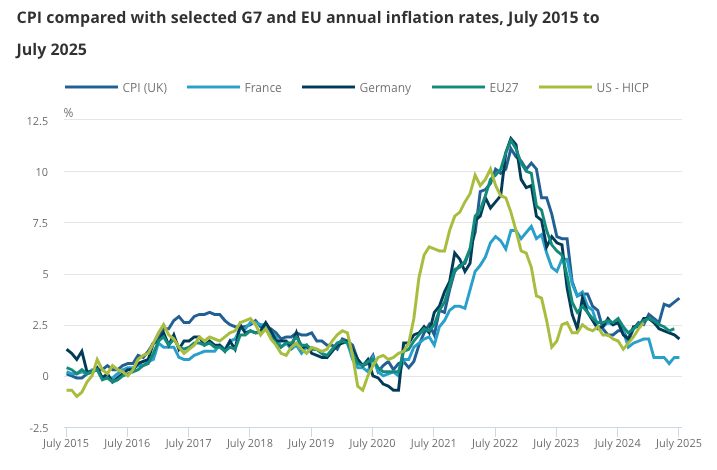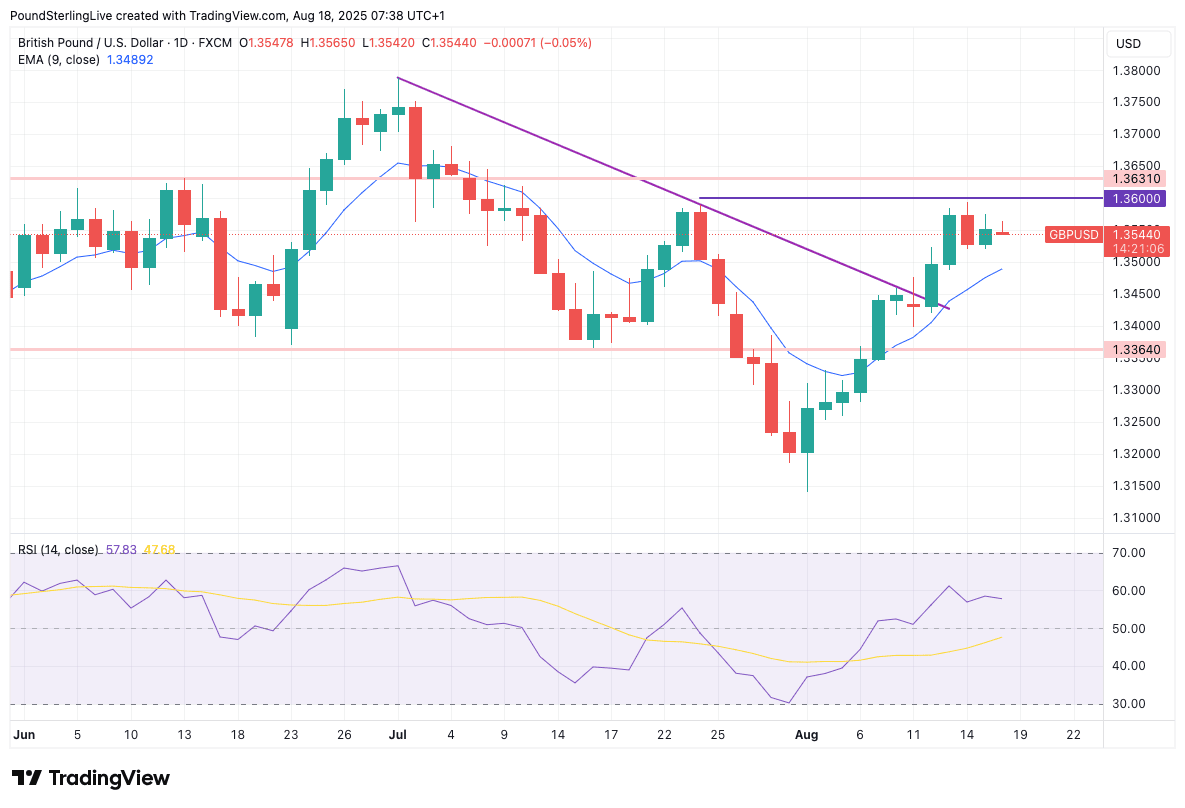
File image. Jerome Powell, Sara Eisen, Anchor at CNBC, Policy panel at the ECB Forum on central banking. © Your Image for the ECB.
The Pound to Dollar exchange rate (GBP/USD) is on course to test 1.3631.
Pound Sterling is in a short-term uptrend against the Dollar and we would look for further gains, although Wednesday's UK inflation release and Friday's Jackson Hole event could induce some volatility.
Last week saw GBP/USD break out of the July-August downtrend and establish a more enduring recovery as it rose to just shy of 1.36.
However, the immediate lead-up to 1.36 looks to be a near-term hurdle owing to layered selling interest here, and it could mean the first half of this week proves more challenging for the Pound and further shallow weakness is expected as a result.
A pullback to the nine-day exponential moving average (EMA), currently at 1.3490, is possible.
GBP/USD nevertheless heads into this consolidative phase with positive momentum as the RSI is above 50 and rising. Also, while above the nine-day exponential moving average (EMA), the upside is preferred.
We note too that it is above the major 50, 100 and 200-day EMAs, confirming it to be decisively trending higher; there is nothing in the charts to suggest now is the time to fight the trend.
The key event for GBP is this week's inflation release, due Wednesday. The market has reduced the amount of intrest rate cuts it expects from the Bank of England during the course of the coming months on account of still-high inflation.
"Some sticky UK inflation for July looks unlikely to alter the market's view of the BoE over the coming days. This should keep GBP/USD bid this week, where a break of 1.3585/3600 could see 1.3680/3700 by the end of the week," says Chris Turner, head of FX analysis at ING Bank N.V.
Should inflation figures beat expectations (3.7% is the consensus prediction), then that change in stance will have been verified. The market sees it as increasingly questionable that the Bank can continue its dogged approach to lowering interest rates when inflation continues to rise ever further above its 2.0% target.
"Having risen to 3.6% y/y in June, we suspect the headline rate of UK CPI inflation picked up further in July, rising to 3.7% y/y. A key contributor to the move is expected to come from an acceleration in services CPI inflation from 4.7% y/y to 4.8% y/y," says a note from Lloyds Bank.

Image courtesy of Lloyds Bank.
Falling rate cut bets have bolstered the Pound, which rallied after the Bank's August 07 policy decision that hinted that further cuts are not guaranteed, ensuring UK interest rates will remain higher than those in the Eurozone for some time.
In fact, the Pound is the best-performing major currency in August on account of expectations the UK will have the highest interest rates in the G10 over the coming months.
However, should the inflation data undershoot expectations, then bets for a November rate cut at the Bank of England will grow again, putting pressure on the Pound.
Thursday's PMI survey results will also be important for GBP trading as it will give a snapshot of UK economic performance in August. Last month we saw GBP/USD fall after the PMI's indicated slowing momentum.
"The Composite PMI slipped from June’s nine-month high in July, but at 51.5, still signalled a modest expansion in private sector business activity at the start of the third quarter. We expect it to have rebounded in August led by a further nudge up in the services reading," says Lloyds Bank of the UK's Composite PMI.
But it is the U.S. dollar side of the equation that matters most for GBP/USD, which in turn is increasingly dependent on U.S. Federal Reserve interest rate expectations.
The Fed's Chair Jerome Powell will confront the question of a September interest rate cut when he addresses the Jackson Hole symposium of central bankers.
Jackson Hole has, in the past, coincided with shifts in Fed policy, and recent U.S. dollar weakness suggests the market is expecting another such shift and the commencement of a series of interest rate cuts.
Powell has been under immense pressure from the White House to cut interest rates, with Treasury Secretary Scott Bessent saying last week a 50 basis point cut would be appropriate.
We doubt that such a bold move is in store for September, but Powell will likely hint at the likelihood of a 25 basis point cut on account of deteriorating U.S. employment fundamentals: rate cuts can boost the economy and save jobs.
That being said, inflation is still high and the full effects of tariffs haven't yet been felt; meaning caution is still warranted.
How Powell navigates the dilemma will be consequential for markets and will make for an interesting end to the week for Pound-Dollar.

